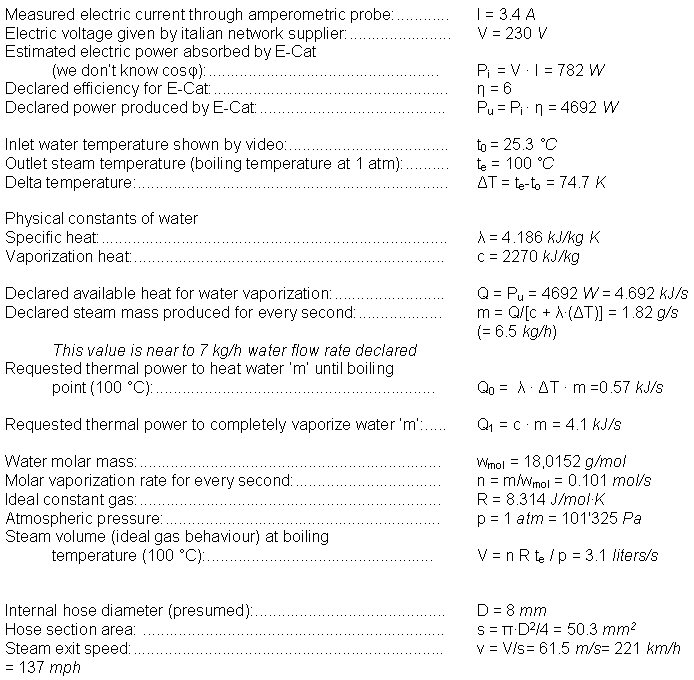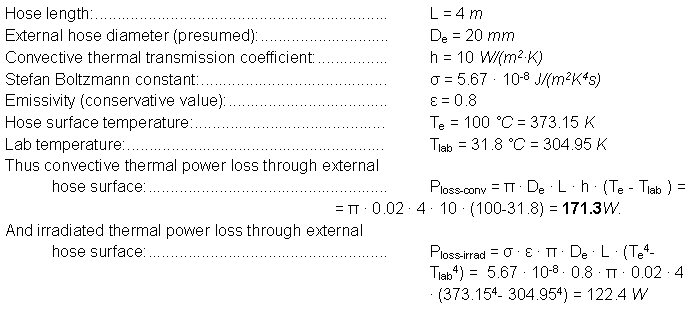|
⇐ Previous Article — Table of Contents — Next Article ⇒
New Energy Times home page
Cirillo Analysis of Steam Exit Velocity of Rossi Experiment
Appendix 3 to New Energy Times Report #3
[Ed: This analysis has been prepared by LENR researcher Domenico Cirillo. He compares the visible characteristics of Andrea Rossi's device, as demonstrated on June 14, 2011 to the declared claims by Rossi of the device's capacity to release kilowatt levels of excess heat. His analysis takes into account thermal losses in the hose. Peer reviewers of this appendix have suggested that the author of this report may have overestimated the thermal transfer out of the hose wall as well as the in-hose condensation.]
Analysis of E-Cat Data Given by Krivit Video Footage

But from Krivit's video clip, maximum measurable speed (following an observation of four frames) is around 0,6 m/s. One hundred times lower than declared.
These calculations above start by electric power, and from this data, following the declared efficiency by Rossi et al., it’s possible calculate the declared thermal power. By this thermal power I have calculated the maximum vaporizable mass (steam). By system geometry, I have calculated the expected conditions for the steam. By Krivit's video clip, these conditions are far from reached.
Perhaps there is possible condensation along the hose. But this requires an important thermal loss from the external surface of the black hose versus external environment.
By viewing the thermal data shown in the video clip we see the E-Cat working in steady conditions, in thermal equilibrium with the room. The doors to the room were open, but still, the temperature in the room should have shown at least some visible increase. So, considering presumed thermal power produced by the E-Cat, 4.7 kW, the thermal transmission between the hose and the environment may be easily estimated:

If we make a comparison between thermal loss (estimated), 171.3 W for convection and 122.4 W for irradiance, and heat requested to boil water flux, 4100 W, (see Q1 above) we may obtain a condensation for less than 7.2 % of steam (in mass). It does not justify the low speed of steam shown in Krivit's video clip.
Brief Biography of Domenico Cirillo (Italy):
Domenico Cirillo has a master's degree in mechanical engineering and has been researching LENR since 2002.
⇐ Previous Article — Table of Contents — Next Article ⇒
| 
